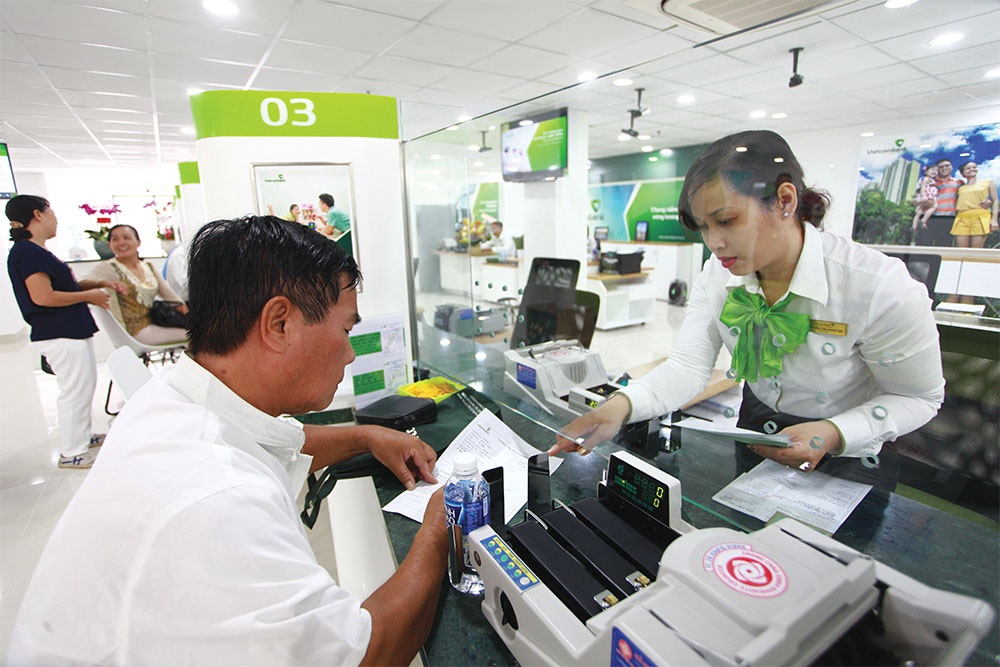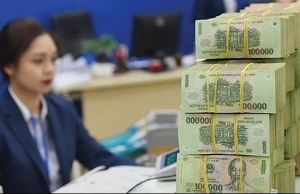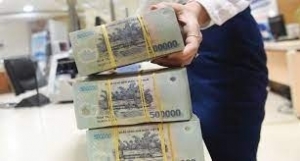Lending rate lag still causing bank unease
 |
| Lending rate lag still causing bank unease, photo Le Toan |
There has been a decline in savings interest rates in recent weeks. From August 23, Agribank continued to reduce deposit interest rates from 0.5 to 0.3 per cent to support individuals and businesses. Since the beginning of the year, Agribank’s deposit interest rate has decreased up to 4.5 per cent.
On the same day, BIDV reduced the deposit interest rate at the counter for 1-month and 3-month terms by 0.3 per cent per year. Interest rates for a 6-month term decreased from 5 per cent to 4.7 per cent per year. Interest rates for a term of 12 months or more were strongly adjusted from 6.3 per cent to 5.8 per cent.
VietinBank’s adjustment level is similar to that of BIDV and the highest deposit interest rate is only 5.8 per cent per year, applied for a term of 12 months or more.
Overall, Agribank, BIDV, VietinBank, and Vietcombank all lowered interest rates for terms of less than 12 months by 0.3 percentage points, while terms over 12 months decreased by 0.5 percentage points.
As for joint-stock commercial banks, ACB’s interest rate dropped sharply by 0.4 percentage points for terms from 6-12 months. Eximbank lowered interest rates five times in August; similarly, VIB reduced deposit interest rates four times in the month, with a reduction of 0.3 percentage points for a 6-11 month term.
Banks that have reduced interest rates three times since the beginning of August include NCB, Techcombank, and BaoViet Bank. Sacombank, BAC A BANK, SaigonBank, GPBank, TPBank, SHB, HDBank, CBBank, and MSB all recorded a downward adjustment of interest rate twice from the beginning of August.
At a seminar held by the State Bank of Vietnam (SBV) on August 22, Standing Deputy Governor Dao Minh Tu admitted that many commercial banks have actively responded to the SBV’s call to lend. However, banks are still encountering difficulties in effectively converting funds into active monetisable assets, leading to the accumulation of surplus liquidity.
Actual developments in the market show that not all banks can boost credit within the rest of 2023, because of their caution when considering lending decisions as well as ensuring credit quality.
Talking to VIR, economist Nguyen Tri Hieu said that cash flow is likely to flow into stocks, gold, and foreign currencies, and may trickle into real estate this year. “From now until the end of the year, there will be many price reductions and price increases. However, medium and long-term gold investments should wait until September after the Fed’s meeting to see if the Fed will raise interest rates. If the Fed raises interest rates, everyone should quickly buy,” he forecasted.
According to Hieu, whether the SBV will decide to continue cutting interest rates in the near future will probably depend on whether the US Fed will continue to raise interest rates or not. US inflation in August increased to 3.25 from 3 per cent in July, raising the possibility that the Fed will continue to raise interest rates or at least maintain the overnight Fed Funds interest rate at 5.25-5.5 per cent.
The current inflation rate is still quite far from the target inflation rate of 2 per cent, and the unemployment rate is improving in the US, increasing the possibility that the Fed will raise interest rates in the upcoming September meeting, he said.
“If the Fed raises interest rates, it will make the SBV hesitant to continue cutting interest rates because its interest rate cuts will increase the exchange rate, causing instability in the foreign exchange market and possibly prompting foreign investors to withdraw money from the Vietnamese stock market,” Hieu said.
Tran Ngoc Bau, CEO of WiGroup, said that the securities industry has overcome the most difficult period of 2022 and is entering the recovery phase in 2023. According to Bau, the signals to predict a prosperous real estate market include the drop in lending interest rates to a lower level as the main driving force for the whole industry to recover.
“Currently, the deposit interest rate has been adjusted since the first quarter of 2023, but there is a lag in the lending rate movement,” said Bau. “Moreover, the legal corridor is being removed to help reopen the real estate supply, and the social housing segment can be a catalyst for the residential real estate industry, as this segment benefits from many supportive government policies,” Bau added.
 | New preferential lending rates assisting recovery Vietnamese and international banks are slashing lending rates to help cash-squeezed clients to weather the storm to lift the domestic economy out of its current difficulties. |
 | How bad debts influence lending rates Last week the State Bank of Vietnam continued reducing diverse regulatory interest rates in a bid to help remove impediments for borrowers, as well as support credit institution efforts to drive down input costs, and from there be able to reduce lending rates. |
What the stars mean:
★ Poor ★ ★ Promising ★★★ Good ★★★★ Very good ★★★★★ Exceptional
 Tag:
Tag:
Related Contents
Latest News
More News
- Tax sector wraps up 2025 and sets priorities for next year (December 25, 2025 | 14:00)
- A tipping point for digital and hybrid wealth management in Vietnam (December 23, 2025 | 13:33)
- $250 million deal targets women-owned SMEs, sustainable agriculture (December 22, 2025 | 17:40)
- Stock market posts resilient 2025 performance (December 19, 2025 | 18:17)
- Citi Vietnam receives 2025 AmCham CSR recognition (December 19, 2025 | 16:35)
- As global green supply chain reshapes, will Vietnam be left behind? (December 19, 2025 | 08:00)
- Banks gear up for massive capital increases (December 18, 2025 | 17:04)
- Securing capital and efficiency for Vietnam’s 2026-2030 growth ambitions (December 17, 2025 | 10:00)
- Energy sector in need of blended finance mechanisms (December 17, 2025 | 09:00)
- Vietnam still has room to mobilise capital for sustainable growth (December 17, 2025 | 08:57)























 Mobile Version
Mobile Version